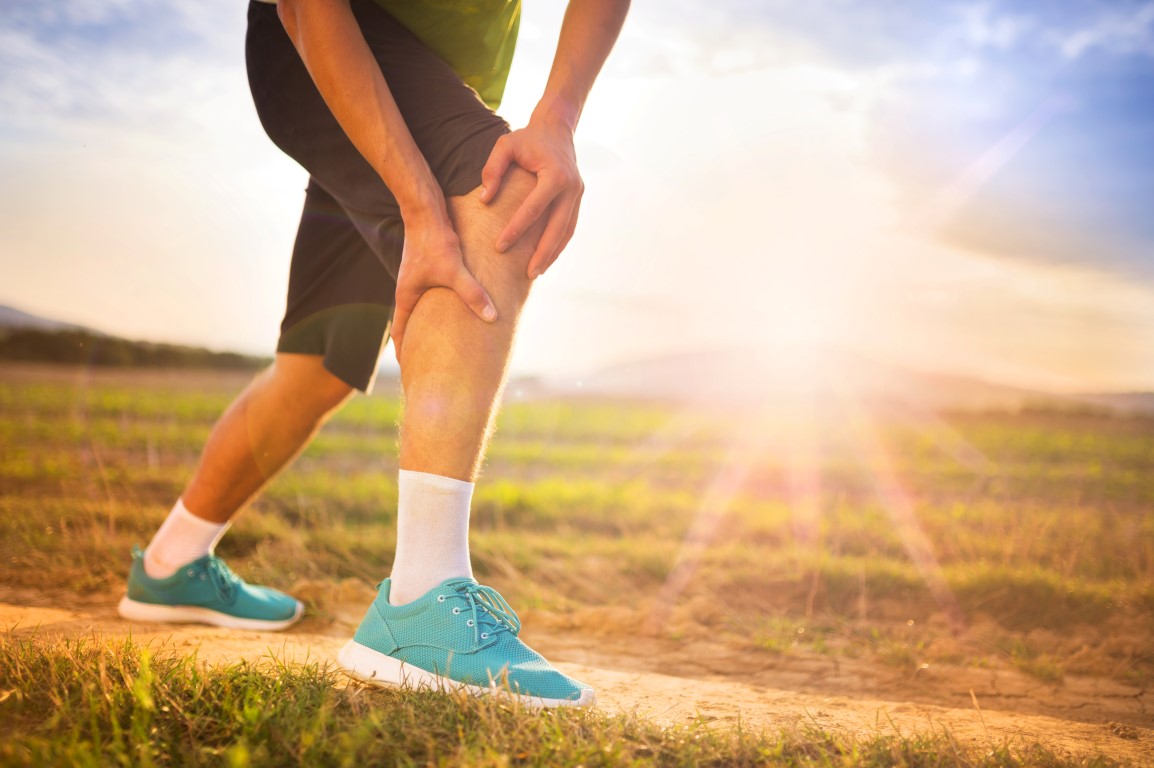
Your knee is an exquisite piece of engineering. The joint where the femur, tibia and patella meet also includes four major ligaments—anterior and posterior cruciate ligaments as well as the medial and lateral collateral ligaments. Joint function is assisted by major cartilage formations as well as fluid-filled sacs called bursae. These miraculous joints enable us to walk, run, sit and stand for our entire lives.
Although our knees are biological marvels, like the rest of our bodies, they are subject to injury and deterioration. Knee pain is the second most common form of chronic pain. Almost one in three Americans will experience knee pain at some point in their lives. Women are more likely than men to develop knee problems.
Contributing Factors for Knee Pain
Knee problems may arise from many illnesses or kinds of injury, but there are some factors that raise the risk.
- Weight—excessive weight is a major risk factor for knee pain. Doctors now recognize that the surge in knee problems in recent years is almost certainly related to the obesity epidemic in America. Higher body weight not only raises the risk of a severe knee injury like a dislocation, but it also contributes to longer hospital stays and more costly treatment.
- Age—another important risk factor is advancing age. It is only common sense that a joint that sustains our weight every day over our lifetimes would experience at least some wear and tear. Knee pain is most likely to occur after age 50 because we tend to exercise less and our muscle strength declines.
- Overexertion—although exercise in general is good for your knees, you can overdo it. One of the most common complaints among joggers is knee pain, especially around the kneecap, but any form of exercise in which the knee is used may produce pain symptoms. It is important to maintain optimal form—with hips, knees and ankles in alignment—as well as build up core strength to minimize risk of injury.
- Gender—about 20 percent of women will develop knee problems, slightly more than men. The primary reason for this is that women tend to have wider pelvises, making an injury more likely. Women also tend to have weaker leg muscles which destabilizes the knee. Certain hormones more common in women also tend to weaken ligaments.
- Tobacco use—smoking has been linked to many health problems including musculoskeletal issues. Smoking contributes to loss of cartilage—which puts you at higher risk for osteoarthritis—and it may make pain more intense.
Causes of Knee Pain
There are many causes of knee pain, but some of the most common include:
- Ligament tears—the four ligaments that bind the bones converging in the knee joint are susceptible to injury. Among the most common is an anterior cruciate ligament tear which happens quite often in sports. If you tear your ACL, you will feel instability in your knee. Depending on the severity of the tear, you may require physical therapy or surgical reconstruction.
- Cartilage tears—menisci made of cartilage line the knee joint and serve as shock absorbers as well as joint stabilizers. A tear in the meniscus may occur if the knee is abruptly twisted, especially among older people. This may prevent leg extension and inhibit walking. If it is only a minor tear, your joint may repair on its own; otherwise, an arthroscopic procedure may be required.
- Tendinitis—a common condition among runners, skiers and cyclists is tendinitis, especially that which involves the patellar tendon. This tendon attaches the quadriceps muscles to the kneecap and may become painfully inflamed due to overuse. This condition is treated in a variety of ways including physical therapy, strapping, or surgery.
- Kneecap dislocation—the kneecap normally moves along a groove at the bottom of the femur bone, but the kneecap may be dislodged so that it moves improperly or is completely dislocated. This misalignment will destabilize the joint, producing pain and possibly inflammation. Upon X-ray confirmation, your doctor may recommend physical therapy, knee bracing or surgery to correct the condition.
- Bursitis—bursa are fluid-filled sacs in the knee joint that help cushion various tissue. The bursa between the shin bone and hamstring tendons may become inflamed, causing temporary pain. In almost all cases, this condition should resolve on its own in time.
- Fractures—a break in one or more of the bones in the knee may result from an impact. This is usually accompanied by pain, swelling and tenderness. You may also experience limited mobility or grating movement. Treatment will depend upon the severity of the condition but may include a cast, bed rest, or surgery.
- Osteoarthritis—this disease causes the cartilage in your joints to deteriorate. If advanced enough, this condition may cause the menisci in your knee to thin or crack. This can lead to joint stiffness, pain and loss of mobility. There is no cure for osteoarthritis, but there are medications and exercise therapies that can slow the progression of this disease.
- Rheumatoid arthritis—this is an autoimmune disorder that causes your immune system to attack the tissue in your joints. RA can erode the lining of joints, eventually leading to pain, bone erosion and joint deformity. There are many drugs including NSAIDs, corticosteroids, and disease-modifying anti-rheumatic drugs (DMARD) that can help manage RA, but there is currently no cure.
- Gout—this form of arthritis involves a buildup of uric acid crystals in the knee and other joints. Symptoms of gout include severe pain, swelling and limited range of motion. Doctors can prescribe anti-inflammatory or uric acid-dissolving medications to treat this condition.
- Bone tumor—osteosarcoma is a relatively common form of bone cancer. Most commonly appearing in children during their growth phase, osteosarcoma usually originates in the shinbone or thigh bone near the knee. This tumor may induce bone pain, fractures, swelling and loss of joint function. Your doctor may use a chemical test or imaging scan to identify the tumor. Doctors may use chemotherapy or surgery to shrink or remove the tumor.
Article written by: Dr. Robert Moghim – CEO/Founder Colorado Pain Care
M.D. Disclaimer: The views expressed in this article are the personal views of Robert Moghim, M.D. and do not necessarily represent and are not intended to represent the views of the company or its employees. The information contained in this article does not constitute medical advice, nor does reading or accessing this information create a patient-provider relationship. Comments that you post will be shared with all visitors to this page. The comment feature is not governed by HIPAA and you should not post any of your private health information.



